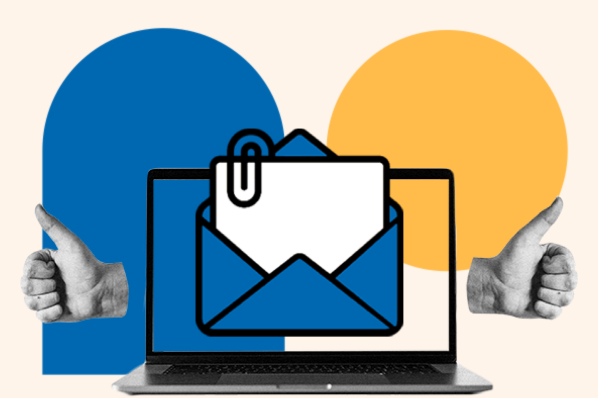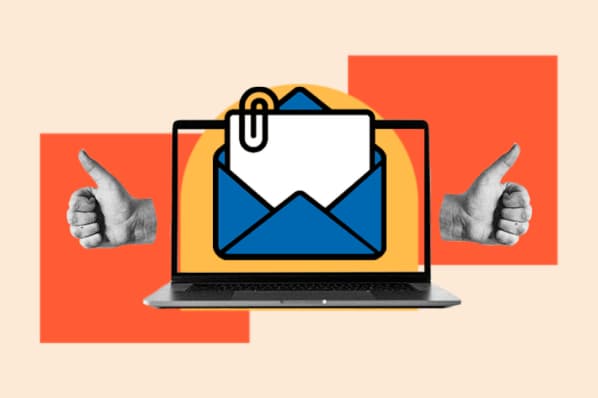The hospitality industry faces a number of obstacles and opportunities in regard to marketing, with one of the greatest puzzles being email marketing.

Email marketing for hotels is a unique challenge: there can be varying customer acquisition periods, low retention rates, and the difficulty of convincing someone to purchase a once-in-a-lifetime experience more than once.
From budget accommodations offering a port in a storm to luxury hotels offering bucket-list experiences, hotels have a lot to gain by leveraging email marketing successfully.
As a digital nomad, I have a greater appreciation for quality hotel email marketing than the average person. As a marketer and a full-time traveler who lives out of hotels and Airbnbs around the world, I encounter these marketing techniques on a regular basis as I navigate my travels. Here's how to get it right.
Table of Contents:
- How Email Marketing Benefits Hotels
- How to Build an Email Marketing Strategy for Hotels
- 7 Tips for Building Your Email Marketing Strategy
How Email Marketing Benefits Hotels
While most hotels send pre-arrival emails to hotel guests like a confirmation email and a reminder for an upcoming reservation, email marketing has powerful potential to engage potential customers.
While some travelers will book last minute, Think With Google reported a trend that consumers are researching and planning ahead more for their travels. For hotels, this means an extended nurture period where hotels have the opportunity to boost bookings through the use of email campaigns.
Challenges
Direct business-to-consumer (B2C) sales are difficult in the hospitality industry. Many consumers turn to websites like Booking.com, Tripadvisor, or Hotels.com to secure their hotel stays, which makes the top of the sales funnel extremely competitive.
When I searched for a hotel in Cusco, Peru, you can see that there are paid ads from Hotels.com, Expedia, Booking.com, and Priceline all vying for customers to purchase through their website instead of booking directly with the hotel itself.
The nature of the travel industry also presents challenges to the hotel business. The average consumer will take a vacation once or twice a year, often visiting a new destination each time.
Customers become expensive to acquire and difficult to retain through email marketing. However, there are still clear benefits of email marketing for hotels.
Opportunities
B2C sales might be a challenge for the hotel industry, but business-to-business (B2B) presents an opportunity. If you build relationships with business travelers, traditional travel agents, and online travel agencies (OTAs), you can build repeat business and nurture relationships through your email marketing efforts.
Hotel owners who own multiple properties can use email marketing to sell different experiences once a guest has had one successful stay with them. Any hotel that lends itself to repeat customers should use email to stay top of mind.
Less than 10% of travelers report that they “always” know which brand they're going to purchase prior to researching. While the nurture period may be long, customers are still up for grabs and ready to be wowed by your marketing efforts.
Need a refresher on email marketing? Read our email marketing guide or watch our training:
How to Build an Email Marketing Strategy for Hotels
Follow these eight steps and best practices to build a hotel email marketing strategy for yourself. As we walk through each step, I'm going to use the Cusco, Peru hotel Inkaterra La Casona as an example.
1. Create content.
Email marketing is just another form of content marketing for hotels. Finding the best email marketing software and feverishly a-b testing subject lines won‘t get results if you don’t start with great content.
“You can‘t use email as a channel unless you’ve got content to feed it,” shared Matthew Barker, co-founder of Horizon Guides. Matthew suggested creating mid-funnel content that's specific to the region where the hotel is located, such as:
- Activity + area — e.g., Penguins in South Africa
- Activity + time — e.g., Northern Lights in January
- How-to + area — e.g., How to see the monarch butterflies in Mexico
This content can be articles that are search engine optimized (SEO), social media copy, or paid ads.
Pro tip: Content that is optimized for search will have the longest lifespan.
Some articles that Inkaterra La Casona could write are:
- Celebrating Inti Raymi in Cusco
- Machu Picchu in winter
- How to visit the Ollantaytambo ruins
2. Turn content into a lead magnet.
In order for viewers on social media or your hotel website to convert to email subscribers, you need to offer them a free gift.
This is called a lead magnet or email freebie. Your lead magnet needs to be high-quality enough to build trust and justify someone joining your email list.
An email lead magnet for a hotel email marketing strategy can take almost any form:
- An in-depth guide broken up into small bite-size pieces
- Suggested itineraries for different trip lengths
- Extensive list of local attractions
- In-depth guides
- E-books
What‘s the easiest lead magnet for hotels? According to Matthew Barker, it’s offering a digested version of a larger guide.
“Inside your long guides on your website, ask readers if they want a bite-sized version of that guide delivered to their inbox,” he shared. “Then create a drip sequence that breaks the article up into small pieces.”
Whatever you do, make sure it packs value or it'll fall completely flat at building trust. As a full-time traveler who looks at a lot of free content online, I unsubscribe immediately if an email lead magnet is disappointing. The lead magnet needs to be valuable in order to succeed at building trust.
Some email opt-ins that Inkaterra La Casona could create are:
- An e-book of day trips within reach of the hotel
- Guide to minimizing altitude sickness upon arrival
- Downloadable Spanish and Quechua phrasebook
3. Set up a landing page, sign-up form, or pop-up.
Email marketing for hotels hinges on compelling visitors to join their email list, and this usually happens in one of three places:
- Embedded sign-up form: Website visitors see an embedded form within a webpage on your website advertising your freebie.
- Pop-up sign-up form: A pop-up appears on your website as viewers are reading blog posts, reviewing your packages, or considering booking.
- Landing page: Viewers on social media are directed to an entire web page dedicated to gathering email subscribers.
Landing pages are a great way to convert viewers on social media into email subscribers. Send them from social to a landing page that's designed to convert. Embedded sign-up forms are a great way to engage readers who are on your blog already.
This is the nuts-and-bolts way of growing your email list, but there are many advanced strategies that you can explore as shown in the video below.
Inkaterra La Casona could gather email addresses using these strategies:
- Sign-up form embedded 30% of the way through every blog post
- Timed pop-up that invites readers to sign up after being on the website for 60 seconds
- Form embedded in the hotel website footer on every page
4. Choose email marketing software.
Your hotel email marketing campaigns all need to be sent through an email service provider. While the step of choosing email marketing software can be intimidating (and the options are endless), this step can be simple and low-cost.
You can use our free email marketing tool: HubSpot email marketing. Our email marketing tools can help you organize your email subscribers, send your hotel marketing emails, and grow your list.
5. Write a “welcome” email sequence.
After an email subscriber joins your list, what happens? They need to get their free gift and then be sent through an automated welcome email sequence.
Every successful email strategy needs to start right away otherwise guests will forget that they signed up to your list and the odds of conversion decrease.
This sequence should cover some basic information:
- Your address and a clear unsubscribe button (required by law)
- How often you'll communicate with them
- What value emails have for readers
Welcome email campaigns are arguably the most important emails you‘ll ever send to guests. If they don’t feel compelled to open emails 24 hours after joining your list, the odds of them suddenly engaging are slim.
Thankfully, welcome sequences are a form of marketing automation that are set up once for every opt-in and left to run on autopilot.
A three-part email sequence that Inkaterra La Casona could schedule is:
- Day 1: A welcome email with the lead magnet
- Day 2: Answering FAQs and sharing valuable tips
- Day 3: Shared benefits of booking early
6. Send consistent emails.
After the welcome sequence, regular emails kick in. Whatever frequency you choose, make sure that you only send high-quality email campaigns.
A great way to have potential guests unsubscribe is by sending thin email campaigns with minimum value.
“Having traveled to 70+ countries over the last decade and stayed in hundreds of hotels, frequent emails from hotels can be very useful, and exciting even.
However, this is not always the case,” shared James Hammond, travel expert and host of the Winging It Travel Podcast.
James warns, “emails need to have value-packed information providing guests with useful details of local experiences and not always trying to push a sale for the extra dollar.”
The lesson for hotel marketers: Don’t send emails that are light on value for the sake of emailing more frequently. Choose a frequency that you know you can deliver value on.
The email frequency for Inkaterra La Casona could be one email per month.
While these emails are more about being remembered than making sales, always end with a call to action that encourages readers to book. Then as you approach peak booking windows, push hard for sales.
7. Push for sales in key booking windows.
When are customers most likely to book travel? That's when you should be sending your most persuasive sales emails.
More travel is booked at the beginning of the year than at any other time. Hotels should reference their sales data to see all of their peak booking periods during the year, and then should push for sales in those windows.
For Inkaterra La Casona's email marketing strategy, this could mean sending sales-focused emails during the booking peaks of each quarter of the year.
8. Consider a loyalty program.
A warm, friendly tone goes a long way in the hospitality industry and this should be reflected in the language that you use. Instead of encouraging readers to become email subscribers to get promotional emails, invite them to join your membership or loyalty program.
While not all hotels are in a position to offer discounts, loyalty programs are a standard practice among chains and they're a great way to retain
“Loyalty programs don't need to be complex, just factor your customer acquisition cost (CAC) and your lifetime value (LTV) into pricing promotions,” shared Matthew Barker.
“You know how much it costs to acquire a new customer via direct marketing or an intermediary, and you know how much lifetime value you can drive from repeat business. This should give you healthy room for a compelling promotion for repeat, direct bookings.”
A loyalty program for Inkaterra La Casona could include a 5% discount for members.
7 Tips for Building Your Email Marketing Strategy
Are you inspired to launch your hotel email marketing strategy today? Follow these easy tips and hotel industry best practices to help get the best return on your investment.
1. Send helpful emails.
There's more to hotel email marketing than just marketing emails.
Promotional emails have the goal of getting new guests to book or past guests to book again, but in order to compel guests to revisit your hotel, they need to first become satisfied hotel guests.
You can send four types of emails to existing guests to help improve their experience with your hotel:
- Confirmation emails: Sent right after booking. Send an automated email to guests once they've booked, with all important information about their stay.
- Pre-arrival emails: Sent right before the reservation. Anticipate your guests' questions and provide answers to FAQs like check-in time, directions, parking, etc.
- Welcome emails: Sent at the start of the reservation. Details about check-out times, hotel amenities, important things to know about the area, local events guests may be interested in. Welcome emails can be promotional if they include details about room upgrades or other upsell offers, but the focus should be customer experience.
- Post-stay emails: Send after the reservation. Follow-up emails. Share details about your membership or loyalty program if you have one.
Most of these emails can be automated, with the exception of the welcome message which would need to be updated in order to include relevant information about current local events.
To improve your email open rate, make sure that your email subject lines make it clear that these emails pertain to their reservation and aren't general marketing emails.
My experience receiving countless marketing emails from hotels has taught me that many hotels ignore the actual guest experience in their emails.
So many emails are sent trying to get viewers to make a reservation and then come back again in the future, but value-packed communication during guests' visits will improve the odds of them becoming loyal customers.
2. Embrace storytelling.
Don't just tell potential guests about your hotel, paint them a picture using storytelling.
“Hotels aren't just selling rooms; they're selling experiences,” shared Amanda Sexton, founder of FocusWorks. "Whether it's the breathtaking view from a suite, the rich history of the building, or the gourmet dishes at the in-house restaurant, every hotel has a story to tell."
Email is a personal marketing medium; far more personal than social media, paid ads, or traditional media. It‘s your opportunity to use a guest’s first name, and help them envision themselves in your space.
Paint a picture that guests' are dying to see themselves in.
3. Maximize email segmentation.
Make sure to segment your email list to maximize your efforts. You achieve this by gathering data about guests when they opt into your email list.
A few simple questions can reveal a lot of important data that can be leveraged for your hotel email marketing strategy:
- Individual traveler or an online travel agency
- Budget or luxury
- Traveling alone, as a couple, with friends, or as a family
- When the trip is planned
Then, you can segment your email list to appeal to specific groups of people.
“By segmenting your email list into smaller groups based on preferences, interests, or behaviors, you can craft emails that are more tailored to each of your customer’s individual needs,” shared Jaden Oh, chief of marketing at Traffv.
“This will not only help your hotel to increase engagement with your emails, but also allow you to send content that is more relevant to each customer.”
Audience segmentation will also help you gather data on your customers, which will help you personalize your hotel email marketing campaigns.
4. Personalize when possible.
Once you've harnessed customer data, you can use it to personalize your hotel email marketing campaigns to travelers. This can help you send offers that are more appealing to guests, improving your open rate and email conversion.
“Targeted marketing makes a recipient feel seen,” shared Yulia Saf, founder of Miss Tourist. “Simply including guest history and preferences can be a game-changer. For example, sending special offers on family-friendly activities to past guests who have booked family rooms.”
As a traveler, I‘ve found that the personalization of emails can make me feel more excited for a trip when it’s done correctly, and even less excited when it's done badly. As soon as emails from a hotel start coming into my inbox advertising lots of child and family-oriented hotel services, I wonder if I booked the wrong hotel.
I worry that this hotel will be swarming with screaming children and shouting parents instead of being the calm experience I was hoping to book. A simple question about whether or not travelers are coming alone, as couples, or as families can mitigate this risk.
5. Leverage customer reviews.
Past guests can provide your most compelling marketing material in the form of reviews.
“It's impactful if a hotel email marketing campaign can highlight a good variety of customer reviews and ratings,” shared Rachel Escio, content specialist at Thrive Internet Marketing Agency.
“This is a huge asset that immediately presents the quality of stay that guests can expect, as well as your online reputation as a property and the credibility of the team that runs both front and back-of-the-house.”
6. Include a clear call to action.
Successful email marketing email isn‘t complete without a strong call to action (CTA). All email campaigns need to leave the reader knowing what they’re supposed to do.
These CTAs will be different based on where the customer is at in the customer journey:
- Haven't booked yet: Book now, answer FAQs to help make the decision, etc.
- Pre-arrival emails: How to check in, consider luxury packages like a spa treatment, etc.
- During stay: How to get the most out of their visit, information about local events, etc.
- After stay: Benefits of joining your loyalty program, encouragement to book again, etc.
Having a clear CTA makes viewers understand the value and purpose of each email, and will in turn help improve click-through rate.
7. Tie it to your larger hotel marketing strategy.
Email marketing shouldn‘t be a standalone pillar of a hotel’s marketing strategy; it should complement the larger content marketing plan.
“Always make sure the email content compliments the content on social media, on your website, etc.,” shared Kiara Pajon, account executive at Soto Agency.
“Essentially, the content should match — the same messaging on social media, your website, and email campaigns.”
This makes email marketing for hotels less work in the long run because hotel owners can repurpose content from the website copy, social media, and blog posts into automated emails.
Conclusion
As a traveler, I've personally experienced the good, the bad, and the ugly (or rather the actually helpful, completely useless, and overly promotional) of hotel email marketing.
While many hotels put in minimal effort just the check the email marketing box, the hotel business and hospitality industry have a lot of value to contribute through their email marketing.
It's easy to get caught up in the different email automation software options, email service providers, click-through rates, and more, but successful email marketing for hotels boils down to a few marketing fundamentals.
Remember the customer journey and use these best practices to serve your guest with every reservation confirmation, pre-arrival email, and promotional message.
![→ Download Now: The Beginner's Guide to Email Marketing [Free Ebook]](https://no-cache.hubspot.com/cta/default/53/53e8428a-29a5-4225-a6ea-bca8ef991c19.png)
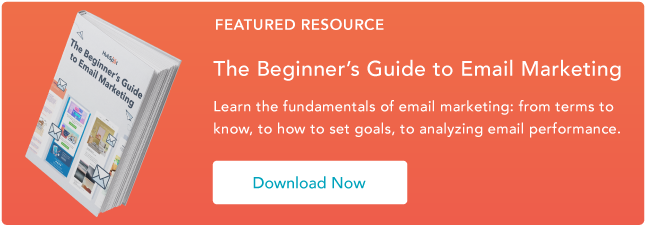


![Creating an HTML Email: The Design Guide You Need [+ Free Templates]](https://blog.hubspot.com/hubfs/html%20design.png)
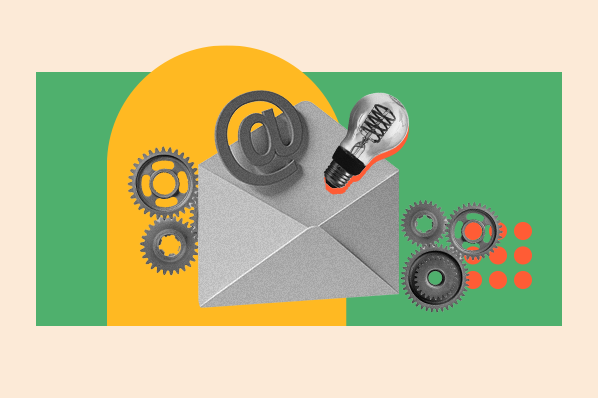
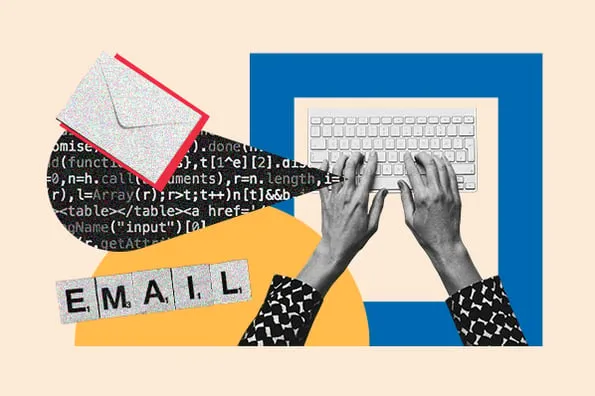
![30 Brilliant Marketing Email Campaign Examples [+ Template]](https://blog.hubspot.com/hubfs/email-marketing-examples_29.webp)
